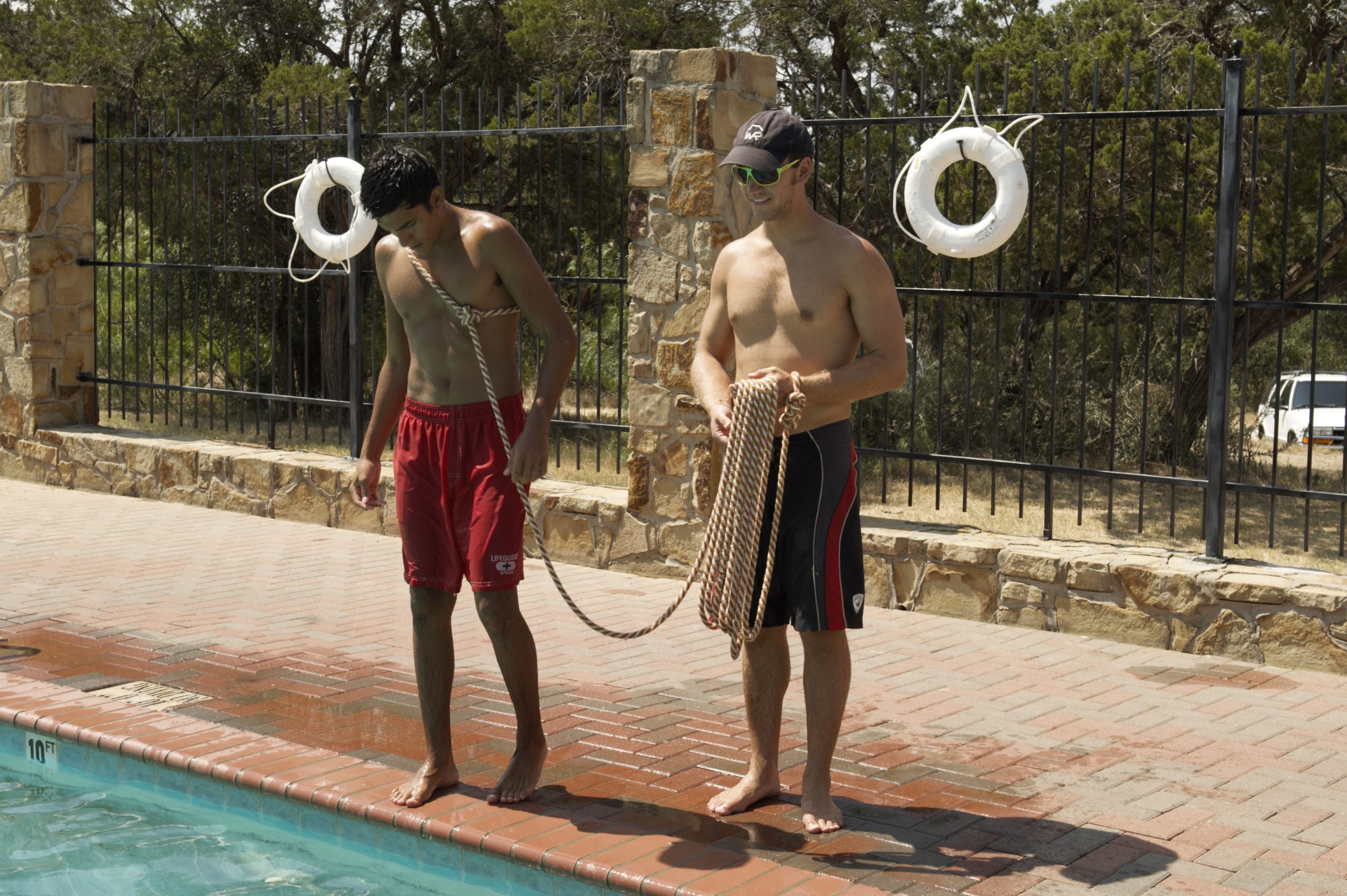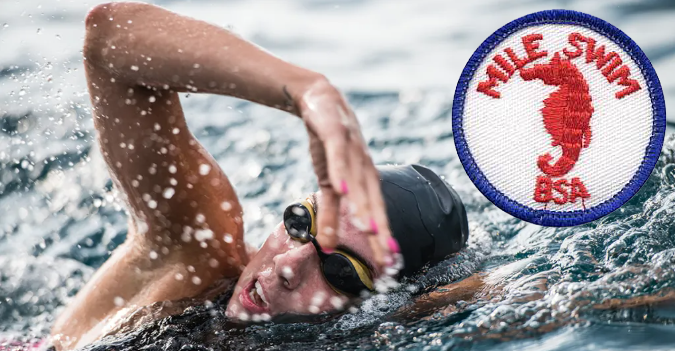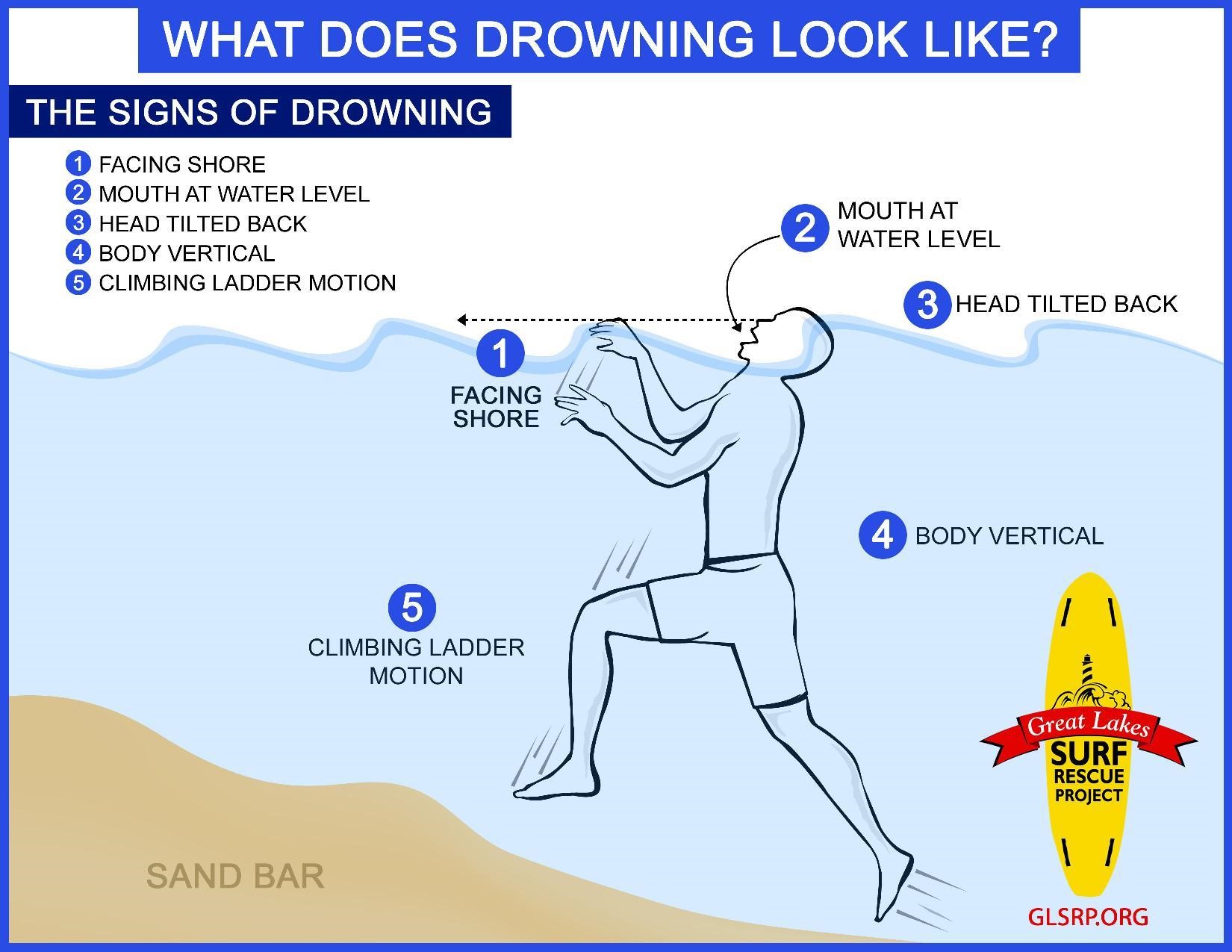
Aquatics
Industry practices for facility lifeguards require the venue, such as a council camp, confirm and document lifeguard competency specific to that location. Simply checking that a lifeguard has a valid certification is not sufficient to meet current standards of care. Those expectations are reflected in NCAP standard SQ-406:
C. Aquatics area staff. The following requirements apply to aquatics area staff:
- All aquatics lifeguarding staff are tested for competency by the aquatics director before assuming lifeguarding or instructional duties. The aquatics director shall keep written documentation of staff and the areas and activities for which they are qualified. Staff in training may not work unsupervised until approved in written documentation by the aquatic’s director. The required skill competencies for lifeguarding include:
- All lifeguards can reach the bottom at the deepest part of the swimming area.
- All lifeguards can reach the furthest extent of their assigned zones within 20 seconds.
- All lifeguards can currently perform water rescue skills (possession of a lifeguard training certificate is not enough; each aquatics director must check that they can still perform to standards).
- All lifeguards can currently perform BLS and first-aid skills (possession of a card is not enough; each aquatics director must check that they can still perform to standards).
- All lifeguards must be trained to execute written emergency action plans specific to local camp swimming areas and activities.
- All lifeguards respond to bloodborne pathogen incidents according to the OSHA-mandated exposure control plan.
To meet those requirements, lifeguard assessment and preservice training, at a minimum, should include:
- Rescue of an active victim, at or near the surface in deep water. This rescue to include victim recognition, emergency action plan (EAP) activation, entry, approach, rescue, and assisting the victim from the water. Each skill must be performed consecutively, not individually.
- Rescue of a passive victim, at or below the surface in deep water. This rescue to include victim recognition, EAP activation, entry, approach, rescue, victim extraction, and after care, including CPR, following camp procedures. Although not specifically required by SQ-406 C, it is appropriate to record the time from EAP activation to beginning of CPR and repeat the exercise if that time exceeds 90 seconds, as specified in BSA Lifeguard requirements 16 and17. Each lifeguard must be evaluated on both the rescue and the ability to perform CPR. However, the same person need not do both in the same scenario. A team response is preferred. Anyone demonstrating CPR must use proper personal protective equipment (PPE).
- Scenario based rescues are encouraged, with each lifeguard having to react to the situation rather than everyone doing the same rescue one after the other. If victims are placed at the furthest extent of the largest zones, and submerged at the area’s maximum depth, then SQ-406 standards a. and b. may be assessed at the same time as rescue skills. Otherwise those should be tested individually.
- Spinal injury management, including in-line stabilization in both shallow and deep water and spinal backboard extraction, is also a critical lifeguard exercise. Since a team approach is needed, it should be part of pre-service training for the entire safety team following procedures in a written EAP.
- For camps where swimming is conducted in murky water, the safety team must also receive pre-service training in the camp’s written EAP for a lost bather. Ideally, the safety team should recover a submerged dummy, or item of similar size and weight to that of an actual person, placed in an unknown position.
- The safety team should review the camp’s exposure control plan for blood borne pathogens and practice using both PPE and clean-up materials as specified in that plan.
Lifeguard assessment and preservice training exercises are similar to those conducted as part of a lifeguard training course. The skill sheets in the current American Red Cross Lifeguarding Manual, which is the text for BSA Lifeguard, provide the performance standards. The BSA Lifeguard Instructor Manual, supplemented by the American Red Cross Lifeguarding Instructor’s Manual, provides evaluation guidance. Therefore, lifeguard assessments and preservice training should be conducted by a current BSA Aquatics Instructor, BSA Lifeguard Instructor or American Red Cross Lifeguard Instructor.
The facility lifeguard skill assessment and preservice training differs from a lifeguard training course in that the exercises are conducted at the facility where the lifeguard serves. The exercises involve the facility safety team, facility rescue equipment and follow that venue’s written EAPs. Therefore, camp lifeguard assessments and preservice training should be conducted at Camp.
Note that SQ-401 C also requires documentation. The camp aquatics director should have a copy of each lifeguard’s training certificate. Assessments and preservice training exercises should be recorded on a check-off form noting the skill, each







